Euphoria and Depression: 7 Stages of the Crypto Investor’s Emotional Cycle
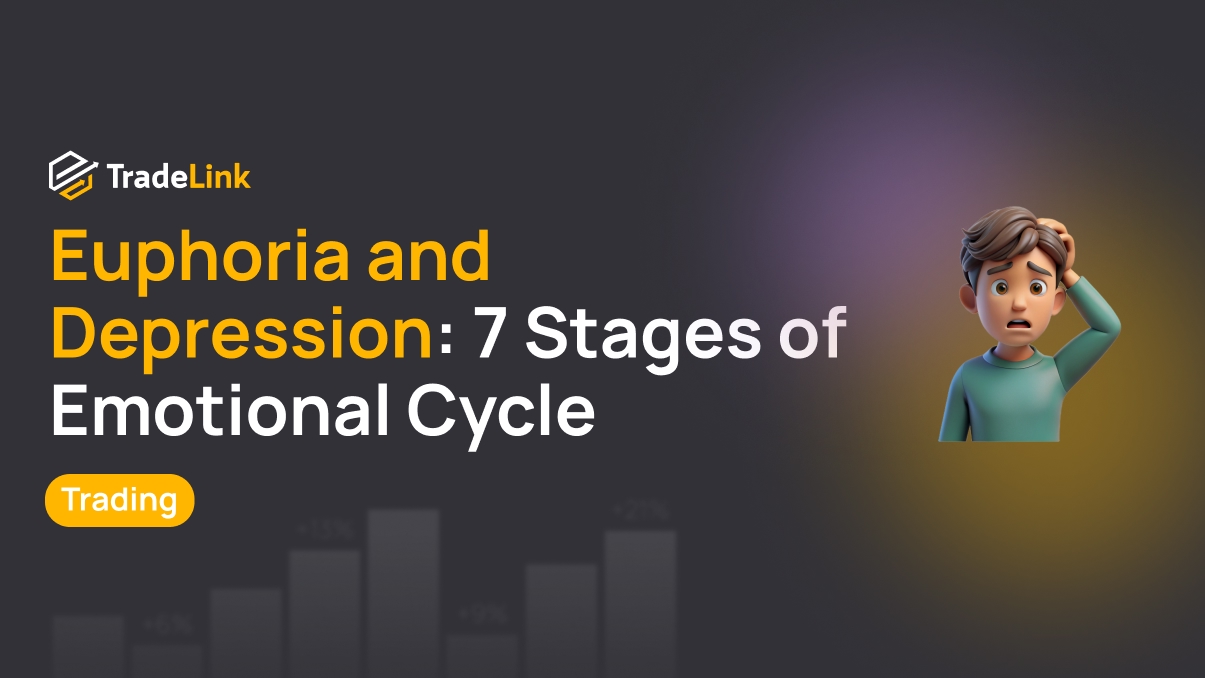
Contents
- Introduction
- What Is the Investor’s Emotional Cycle in Cryptocurrency
- The Role of Emotions in the Crypto Market
- Seven Stages of the Emotional Cycle in Crypto Investing
- Investor Emotional Cycle Table
- Managing Emotions When Investing in Cryptocurrencies
- Conclusion
Introduction
The cryptocurrency market is known not only for its high volatility but also for its pronounced emotional component. Investor psychology plays a key role: emotions often determine when someone enters or exits the market. Understanding the emotional cycle helps reduce risks, avoid impulsive actions, and build more rational strategies.
What Is the Investor’s Emotional Cycle in Cryptocurrency
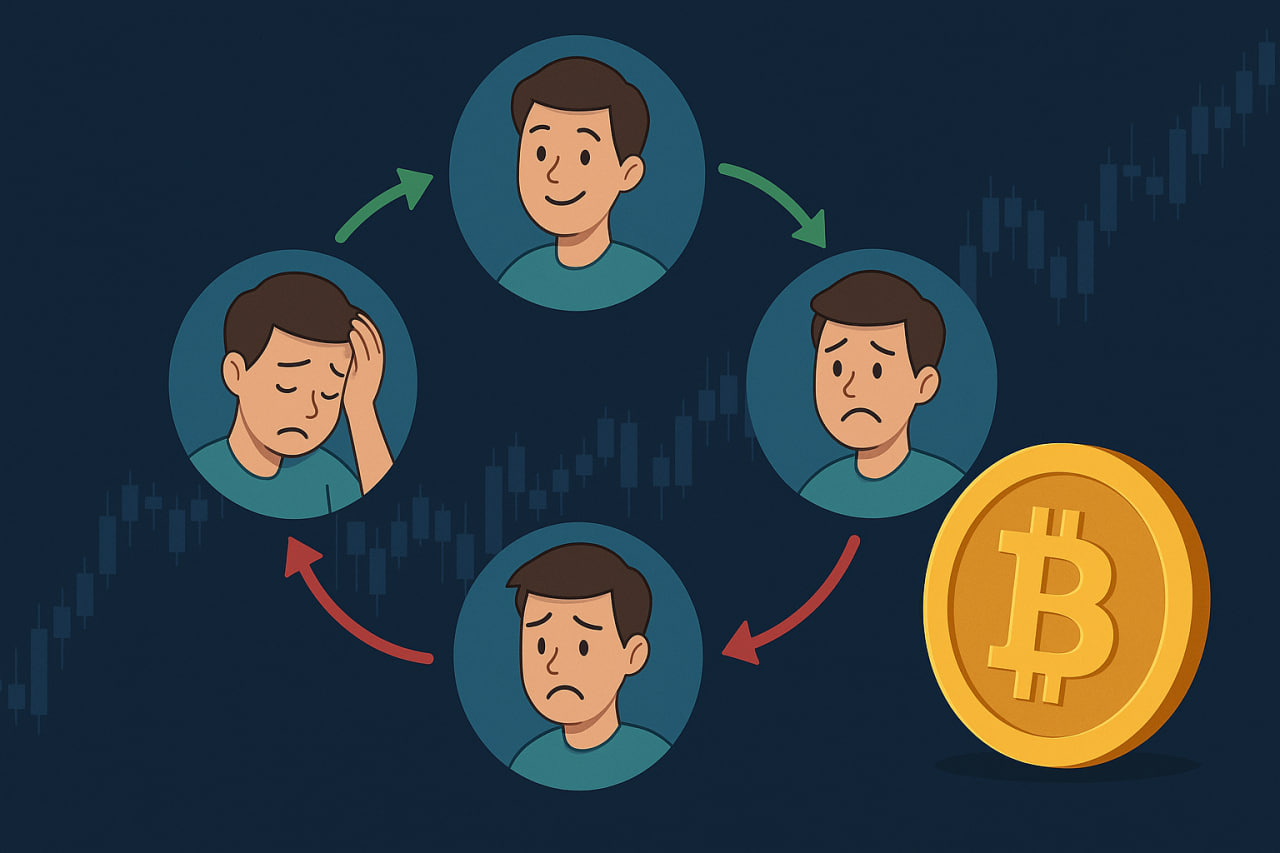
The investor’s emotional cycle in cryptocurrency is a sequence of states that market participants experience depending on price dynamics. It is closely linked to the psychology of financial markets and reflects how crowd sentiment shapes trends.
Unlike traditional assets, cryptocurrencies are more susceptible to emotional swings. The reason is high uncertainty, lack of fundamental benchmarks, and strong influence from news and social media. As a result, emotional stages manifest especially vividly in crypto markets.
The Role of Emotions in the Crypto Market
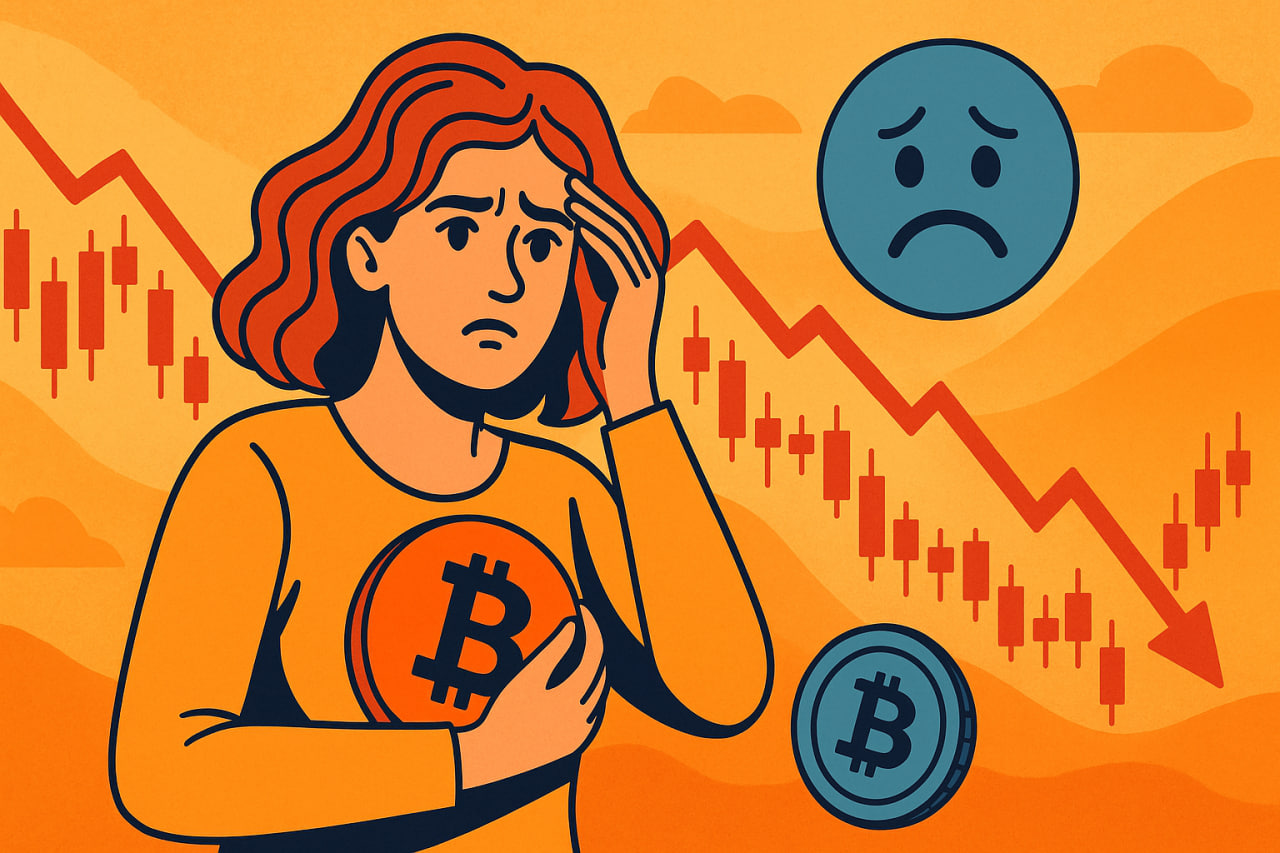
Emotions drive the behaviour of most participants. Fear and greed create market fluctuations, while phenomena like FOMO (fear of missing out) and panic selling can sharply change trends. The psychological cycle of cryptocurrency markets demonstrates that mass sentiment directly impacts price movements.
It is important to note that emotional mistakes are not only made by novice investors. Even experienced traders are prone to the illusion of control, tend to overestimate their predictions, and often fall into psychological traps of financial markets. Overconfidence during price rises and excessive fear during declines are two sides of the same coin, amplifying market swings.
Key Emotions Affecting the Market:
-
Fear leads to selling at the bottom and realising losses.
-
Greed — drives buying at the peak when risks are highest.
-
Euphoria — creates bubbles and the illusion of endless growth.
-
Depression erodes confidence in assets and prompts market exit.
These states often appear cyclically. That is why sentiment indicators, such as the Fear & Greed Index, help better understand the current market situation and prepare for possible scenarios.
Seven Stages of the Emotional Cycle in Crypto Investing
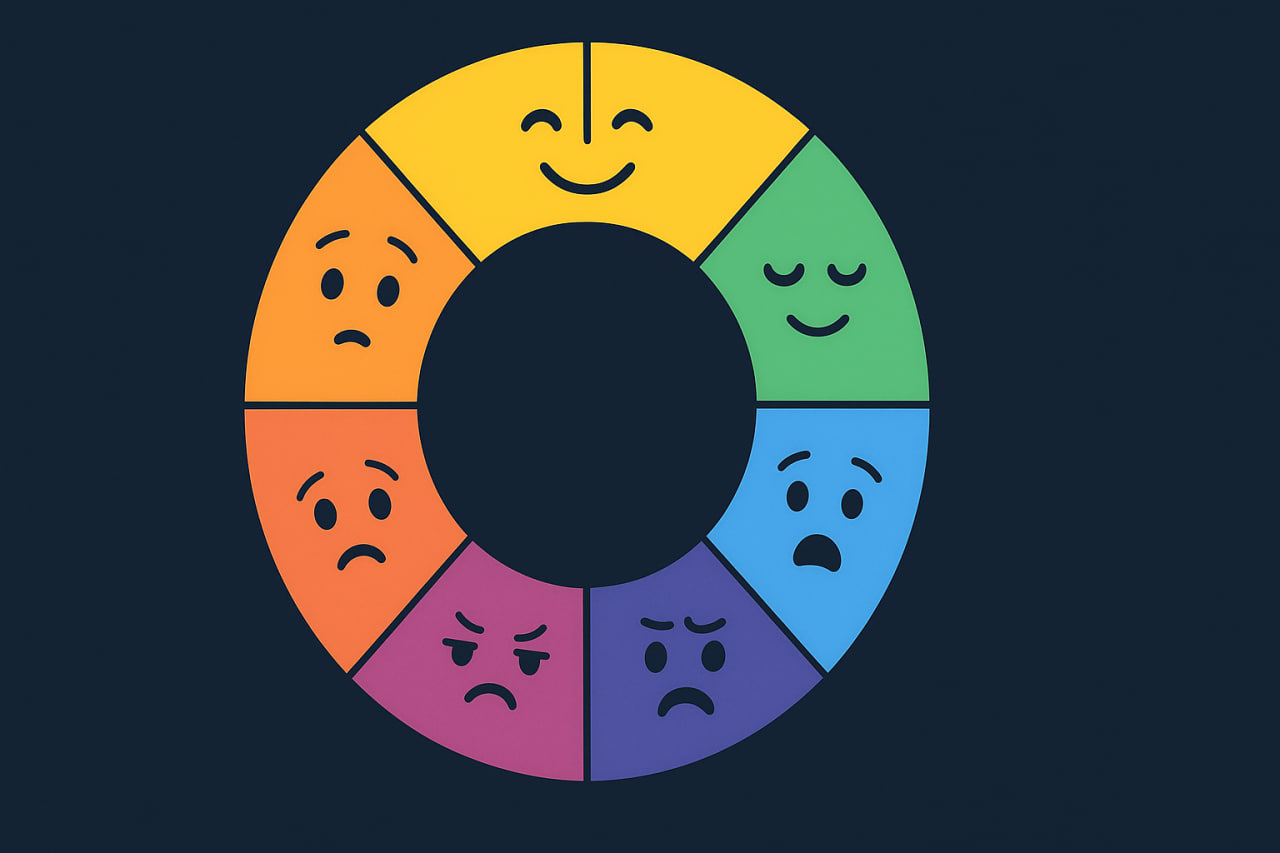
Every investor goes through certain emotional stages. Understanding them helps interpret market dynamics and evaluate one’s own behaviour.
Optimism and Hope
The beginning of a price uptrend is accompanied by enthusiasm. Investors believe in cryptocurrency prospects, and early forecasts of future growth appear. Many see this as a chance to “get in on time.”
Confidence and Euphoria
At price peaks, there is a feeling that the rise will never end. Investors ignore risks, and stories of quick wealth circulate. This is where cryptocurrency bubbles originate.
Anxiety and Denial
The first signs of a decline create doubts. Market participants rationalise the drop, convincing themselves it is just a temporary correction. Decisions to sell are postponed.
Fear and Panic
When prices drop sharply, panic selling begins. Mass exits push prices down even further.
Capitulation and Depression
At the cycle’s bottom, disappointment sets in. Investors realise losses, consider cryptocurrencies hopeless, and withdraw from investing.
Hope for Recovery
With the first signals of growth, interest returns. Participants start cautiously re-entering the market but act more conservatively.
Renewed Confidence
As the trend strengthens, confidence grows, forming a new cycle. Positive forecasts reappear, and trust in cryptocurrencies increases.
Investor Emotional Cycle Table
| Stage | Typical Emotions | Typical Behavior |
|---|---|---|
| Optimism | Excitement, hope | Initial purchases, belief in growth |
| Euphoria | Confidence, greed | Mass investments, ignoring risks |
| Anxiety | Doubt, denial | Refusal to sell at first dips |
| Panic | Fear, uncertainty | Selling during decline, realising losses |
| Capitulation | Depression, disappointment | Exiting the market, loss of interest |
| Recovery | Cautious hope | New small-scale purchases |
| Confidence | Renewed optimism | Active return of investors |
Managing Emotions When Investing in Cryptocurrencies
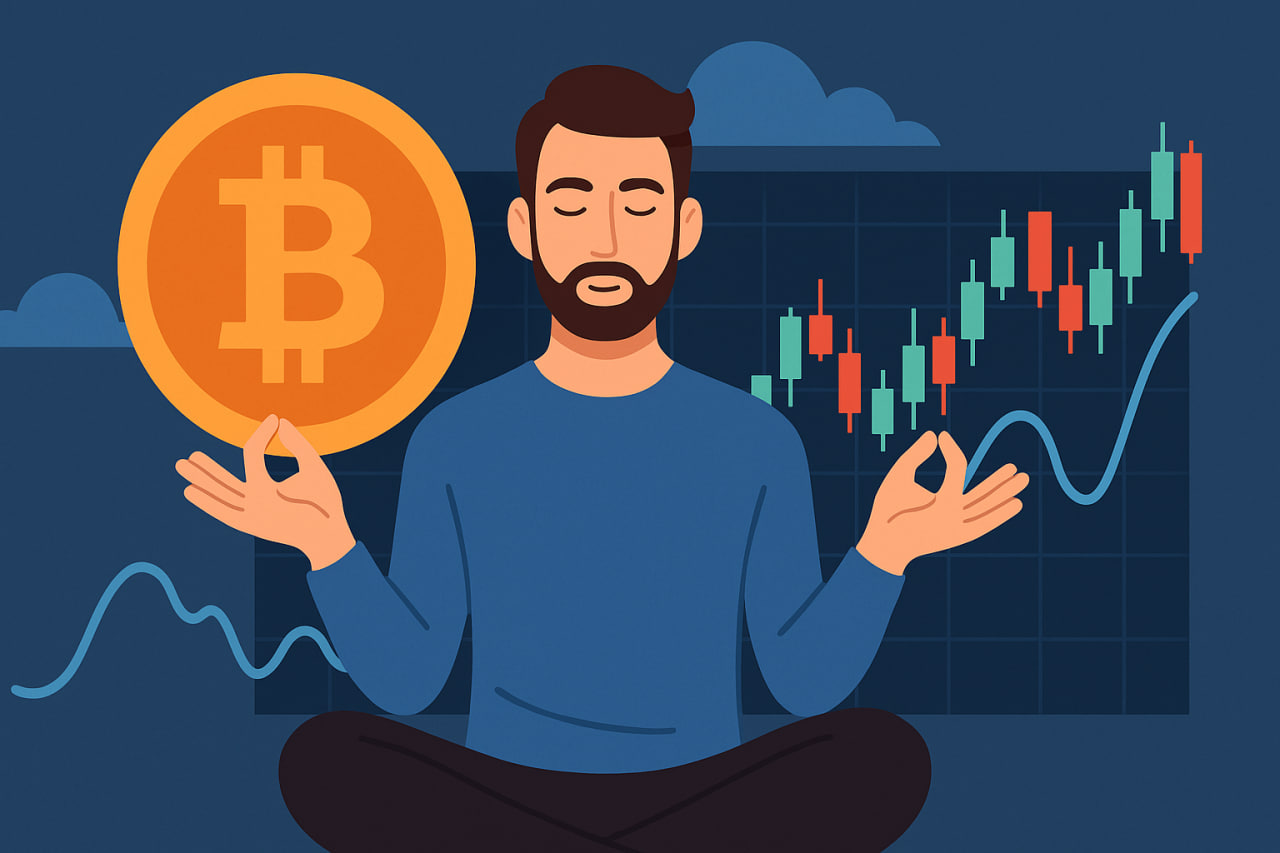
Emotions cannot be eliminated, but they can be managed. Understanding crypto market psychology and maintaining discipline helps minimise mistakes. The ability to stay calm during sharp fluctuations is key to long-term success.
Practical Tips for Controlling Emotions:
-
Use the Fear & Greed Index to gauge market sentiment.
-
Diversify your portfolio to reduce dependence on a single asset.
-
Follow a pre-defined strategy instead of acting impulsively.
-
Maintain a long-term perspective and resist short-term fluctuations.
It is also useful to develop self-analysis skills. Keeping a trading journal, recording not only financial outcomes but also the emotions accompanying each decision, helps identify patterns and avoid repeating mistakes.
It is important to recognise that emotional investing carries certain risks. For example, during cryptocurrency bubbles, many succumb to euphoria and invest more than they can afford to lose. Conversely, during sharp declines, investors often sell hastily, missing opportunities for long-term recovery.
Conclusion
The emotional cycle of a crypto investor is not an abstract theory but a practical model reflecting real stages of market participant behaviour. Understanding that euphoria and depression are natural elements of the cycle allows for more balanced decision-making.
Grasping cryptocurrency market psychology helps avoid common mistakes associated with emotional traps. Ultimately, discipline, a systematic approach, and self-awareness distinguish successful investors from those who remain at the mercy of their emotions.